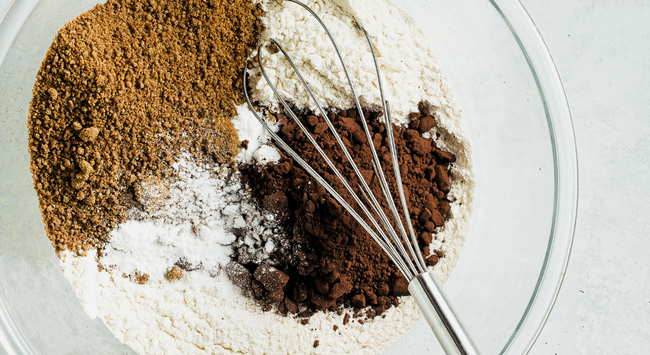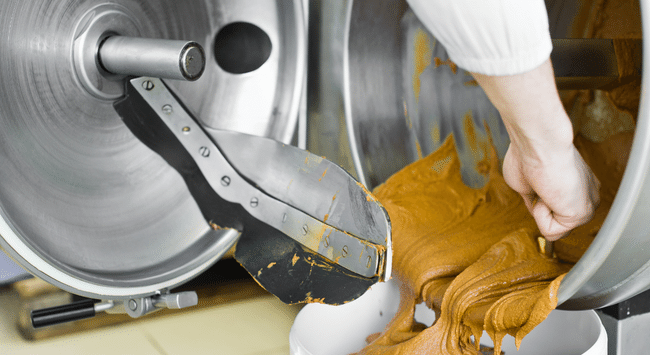
4 Factors That Determine Successful Blending in Food Processing

When you’re in the food industry, there are a lot of things to consider – from start to finish. One of the most important steps in food processing is blending.
This is when you mix two or more ingredients together to create a new product. But what do food manufacturers do for a successful blend? There are four factors that play a role in determining the success of your blend: product type, particle size, the type of blending equipment used, and processing time.
In this blog post, we’ll explore each of these factors and how they contribute to a successful blend.
#1 The Particle Size

If the particles are too large, they will not be able to blend evenly and may result in an uneven or lumpy finished product. On the other hand, if the particles are too small, they will not be able to retain their shape and may turn into a powdery mess, unless your goal is to create very fine powders.
The ideal particle size for successful blending is somewhere in the middle, where the particles are small enough to blend evenly but large enough to retain their shape.
There are a few different ways to achieve the ideal particle size for blending. One is to use a grinder or food processor for particle size reduction before blending.
Another one is to start with ingredients that are already close to the ideal particle size. And finally, you can use a special blender designed for food processing that includes features like adjustable speed and settings for different types of ingredients.
No matter which method you choose for your mixing process, paying attention to particle size is essential for achieving successful results when blending ingredients together in food processing.
#2 Physical Properties of the Food Products
Density also plays a role in how well ingredients blend together. If one ingredient is much denser than another, it may sink to the bottom and become difficult to incorporate into the mixture.
Furthermore, mixing involves creating a proper moisture content ratio; if certain dry materials become too wet, they may not bind together with other ingredients properly.
#3 The Type of Blending Equipment Used

There are three main types of blending equipment used in food processing:
Ribbon Blenders
They consist of a U-shaped horizontal trough with a double helix ribbon agitator rotating within. The ribbon agitator consists of two outer ribbons that rotate in opposite directions, with a series of inner paddles located between them. Ribbon blenders are well suited for handling both dry and wet ingredients, as well as those that are friable or sticky.
Paddle Blenders
Paddle blenders, also known as plow blenders, consist of a U-shaped horizontal trough and a series of vertical paddles mounted on a central shaft. Paddle blenders are typically used for dry ingredients, as they are not as effective at handling wet or sticky ingredients or for gentle blending.
Twin-Shell Blenders
Twin-shell blenders consist of two concentric shells that rotate in opposite directions. The space between the two shells is known as the active zone, where the blending action takes place. Twin-shell blenders are typically used for dry ingredients, as they are not as effective at handling wet or sticky ingredients.
#4 The Processing Time
If the processing time is too short, the ingredients will not have enough time to mix together properly and may not blend evenly. On the other hand, if the processing time is too long, the ingredients may overheat and break down, resulting in an uneven blend.
The ideal processing time will depend on the type of ingredients being blended, as well as the type of food processor being used. For example, harder ingredients like nuts or seeds will require a longer processing time than softer ingredients like fruits or vegetables. Additionally, food processors with higher power levels will typically have shorter processing times than those with lower power levels.
To ensure successful blending, it is important to experiment with different processing times and production line equipment until you find the sweet spot for your particular ingredients and food processor.
Which Method Is Used for Blending In Food Processing?

There are a few different methods that can be used for blending in food processing, and the most successful one will depend on the factors mentioned above.
For example, if you want to achieve a smooth texture, you might use a method like emulsification. This involves adding an emulsifier (like lecithin) to help the ingredients bind together and create a smooth texture.
If you’re looking for more of a chunks and swirls effect, then mechanical blending would be a better option. This simply means using blades or other physical means to mix everything together until it reaches the desired consistency.
Final Thoughts
When it comes to food processing, blending is an essential step in creating successful and consistent products. There are several factors that determine whether or not food blending will be successful, including the type of ingredients being used, the equipment being used, and the blending process itself.
With a little trial and error, you can produce a perfectly blended final product every time.




